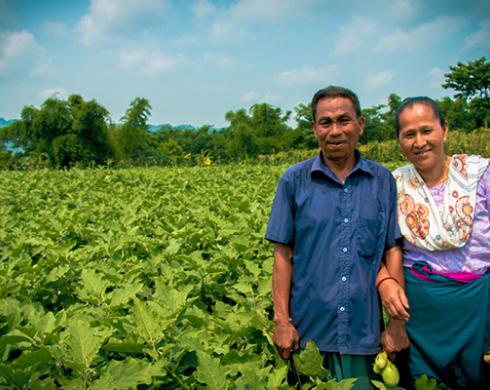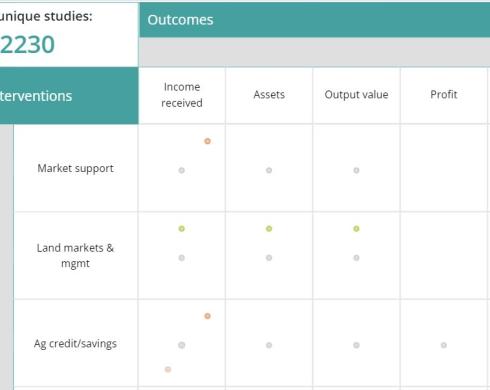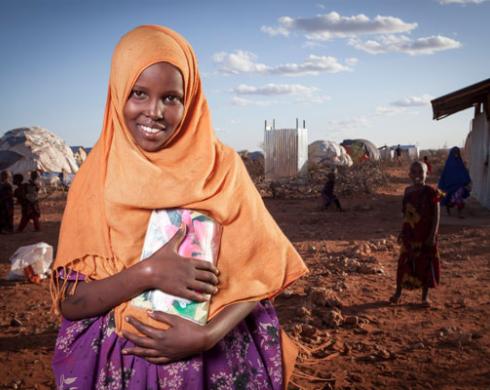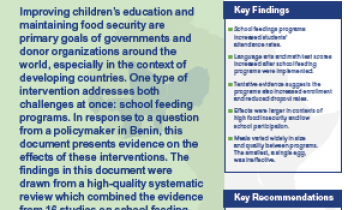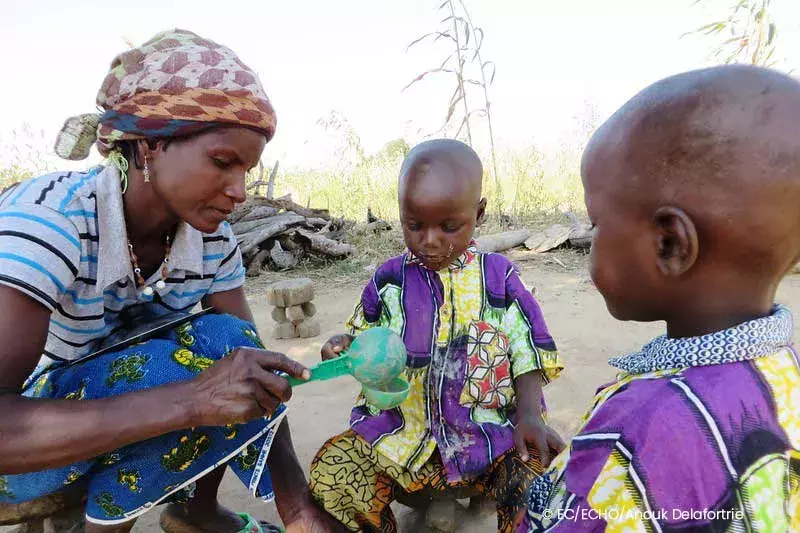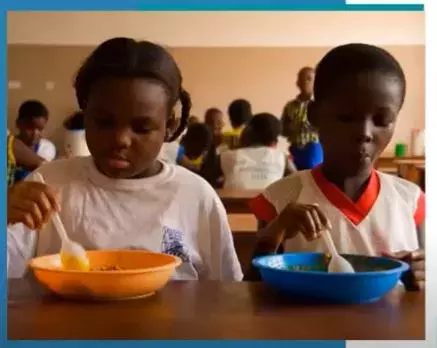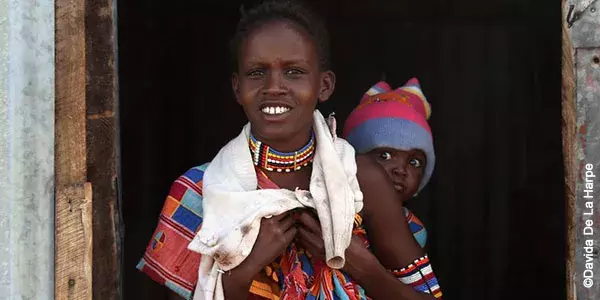Nutrition and Food Security
Everyone needs reliable access to sufficient, safe and affordable nutritious food, coupled with a sanitary environment, adequate health, education and care. However, all too often, this need is not fulfilled. Despite best efforts, significant gaps persist between global nutrition targets and actual achievements. 3ie’s nutrition, agriculture, and food security programs attempt to provide evidence regarding the impacts of interventions that are meant to address this basic human requirement.
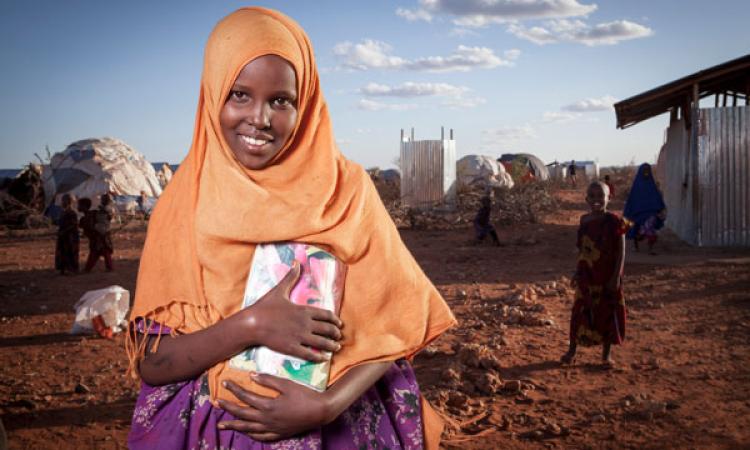
Projects
Living E&GM
Food Systems and Nutrition Evidence and Gap Map and synthesis work
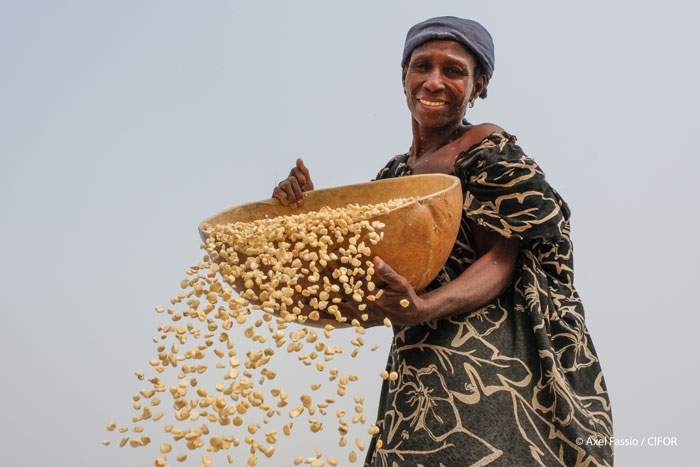
Ending hunger is one of the Sustainable Development Goals. To do this, many development organizations are working within the food system. This has resulted in an explosion of research regarding what interventions work within the food system to improve food security and nutrition outcomes. However, this literature is massively disorganized and difficult to make sense of. To make this information more accessible and support the targeting of new research, 3ie with support from Innovative Methods and Metrics for Agriculture and Nutrition Actions was commissioned by Germany’s Federal Ministry for Economic Cooperation and Development (BMZ) through Deutsche Gesellschaft für Internationale Zusammenarbeit (GIZ) through its “Knowledge for Nutrition” program to develop an evidence and gap map (E&GM). This E&GM systematically collates all impact evaluations and systematic reviews of impact evaluations relating food systems interventions to food security and nutrition outcomes. 3ie has extended this to be our first-ever “living” E&GM. We update it every four months, publishing new information on the current state of the evidence.
Our mapping exercise raised a lot of questions about the distribution of the evidence base. It showed some obvious evidence clusters, such as those around fortification and supplementation, but also highlighted some intriguing gaps, such as around women’s empowerment and governmental manipulations of price. Now that we have engaged in this process for over two years, we are able to say that this distribution is evolving, with noticeably less clustering over time.
Having had their interest piqued, GIZ’s Knowledge for Nutrition program, with funding from BMZ, commissioned the funding of synthesis pieces on women’s empowerment, and taxes and subsidies within the food system. The purpose of these projects was to understand what exactly the limited evidence base says. We knew there was a lot of implementations in these areas, but there was little research.
Aquaculture
Gathering evidence on what works to promote productivity, income, nutrition and women's empowerment
The production and consumption of fish, a nutritious source of food for around one billion people, is rising globally. The bulk of aquaculture still originates from small-scale farming in developing countries such as Bangladesh. With support from the Bill & Melinda Gates Foundation, 3ie is building the evidence base to inform the effectiveness of aquacultural systems as a means to improve income, nutrition and women’s empowerment in low-income contexts. To do so, we are systematically reviewing evidence on aquaculture interventions in low- and middle-income countries. Our systematic review (read report) examines the state of evidence on aquaculture in low- and middle-income countries, particularly on women’s empowerment and issues related to gender in aquaculture value chains. We are also conducting an at-scale mixed methods evaluation in Bangladesh to estimate the impacts of WorldFish’s IDEA project on productivity, income, nutritional diversity and women’s empowerment and examine the processes and mechanisms that explain impacts.
Anaemia
Mapping interventions to reduce anaemia in low- and middle-income countries
Anaemia affects half a billion women between 15–49 years of age and 269 million children between 6–59 months of age globally, according to WHO. Over the last few years, there has been a slower decline in its prevalence despite continued efforts and multisectoral interventions. 3ie, with support from Nutrition International, has mapped the evidence base of impact evaluations and systematic reviews of interventions that aim to improve anaemia in low- and middle-income countries. The evidence gap map (EGM) includes 2,196 impact evaluations (IEs) and 57 systematic reviews (SRs) that we rated as high or medium confidence, and 15 ongoing SRs. We mapped the evidence across 46 intervention categories under 13 sub-domains and 21 health outcome categories.
Most IEs focused on direct causes through supplementation of preventative and therapeutic micronutrients or anti-malaria programs. Anaemia prevalence and haemoglobin levels were the most frequently measured outcomes. Far fewer studies focused on interventions to address underlying risk factors of anaemia, such as poverty.
We are approaching the end of what was termed as the ‘Nutrition Decade’ and more than ever highlighting evidence clusters and mapping evidence gaps has become urgent to formulate evidence-informed action for the future. Our EGM provides a comprehensive overview of the existing evidence that studies the effectiveness of interventions addressing anaemia and highlight primary and synthesis gaps.
Read EGM report | Read EGM brief 1 | Read EGM brief 2 | EGM protocol | View blog
School feeding
Impact of school feeding programs
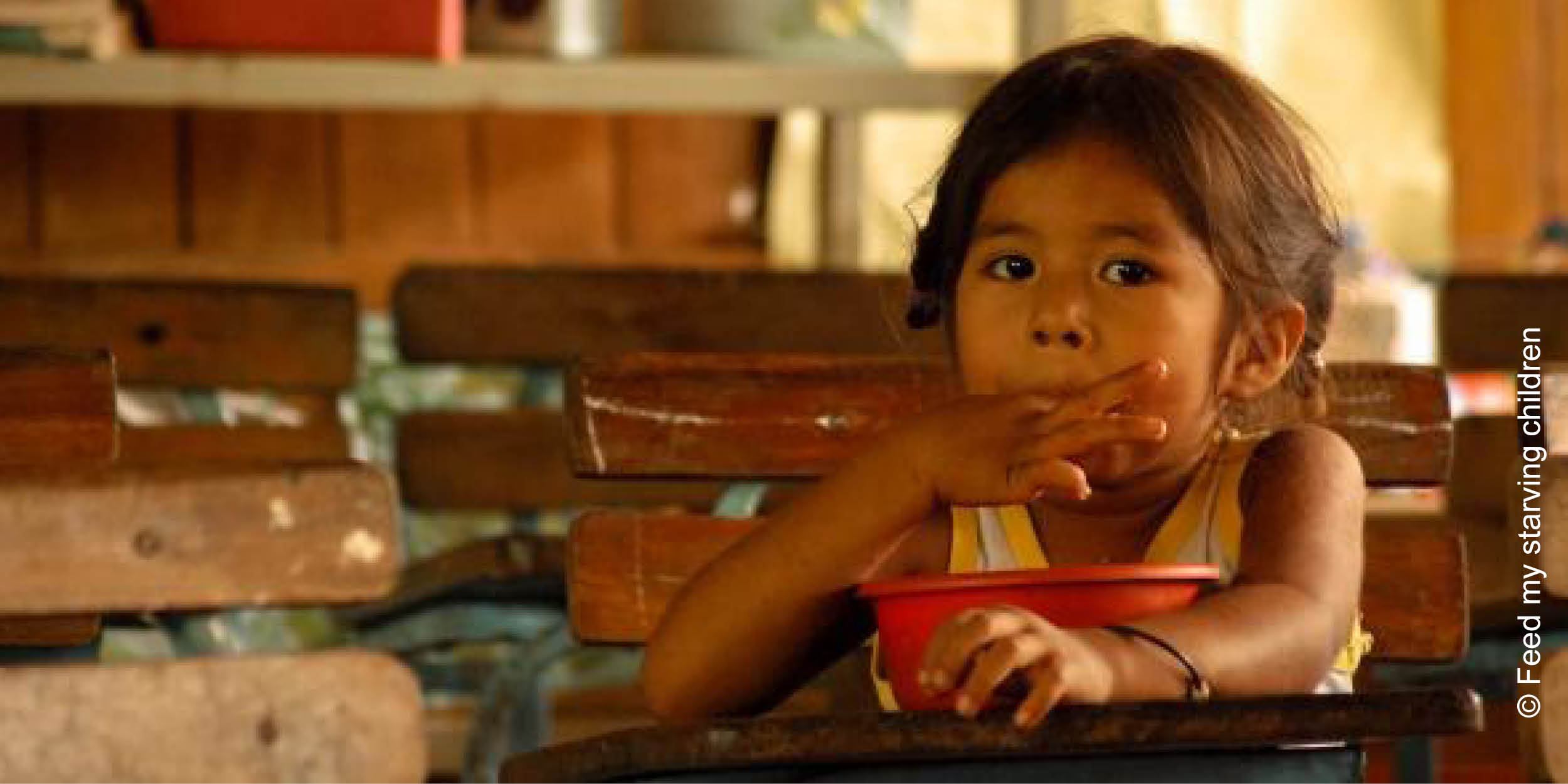 School feeding programs have been proposed as effective means to eradicate child hunger. These programs may also serve as incentives for children to attend school. School feeding programs are largely thought to be an elegant solution to an intricate problem. How do we reach the most number of children during their vital developmental years to ensure they have the nutrition they need to develop both physically and cognitively? Schools represent a single location in which the vast majority of children can be reached at once. School and nutrition programming is synergistic because both have the same goal of improving child development. In addition, school feeding programs could be a valuable incentive to retain the most vulnerable children in school.
School feeding programs have been proposed as effective means to eradicate child hunger. These programs may also serve as incentives for children to attend school. School feeding programs are largely thought to be an elegant solution to an intricate problem. How do we reach the most number of children during their vital developmental years to ensure they have the nutrition they need to develop both physically and cognitively? Schools represent a single location in which the vast majority of children can be reached at once. School and nutrition programming is synergistic because both have the same goal of improving child development. In addition, school feeding programs could be a valuable incentive to retain the most vulnerable children in school.
Do these programs really work? What is the evidence? Are they cost-efficient? 3ie has supported several studies to consider the impacts of school feeding programs on the development of human capital, both physical and cognitive. The key ones are listed below.
- The promise of preschool in Africa: final report, blog, and impact summary
- The impact of daycare programs on child health, nutrition and development: a systematic review
- Interventions for improving learning outcomes and access to education in LMICs: a systematic review
- What is the impact of school feeding programs on students results?: rapid response brief
Capacity strengthening
Strengthening capacity for applying implementation science in Kenya and Uganda
| At a Glance |
| Start |
| November 2017 |
| End |
| June 2021 |
| Sector |
| Health |
| Geography |
| Kenya and Uganda |
As shown by our EGM, there is a vast amount of literature regarding what works to support nutrition. However, real world results often fall short of those found in evaluations. Implementation science and research can help identify and address challenges to implementation. 3ie and the Society for Implementation Science in Nutrition (SISN), with the support of the Bill & Melinda Gates Foundation, worked together to improve implementation and scaling up of anaemia control programs for women and children in Kenya and Uganda. This initiative focused on improving the delivery and uptake of iron and folic acid supplementation (IFAS) by galvanizing a coalition of policymakers, program actors and researchers in both countries. This project included providing technical assistance on the concepts of implementation science for nutrition experts and an introduction to nutrition for implementation scientists. This project also provided 3ie an opportunity to find synergies between impact evaluation and implementation research.
Key results:
- Strengthened capacity for applying implementation science at the country level to address program implementation challenges and bottlenecks in an appropriate, rigorous, iterative and timely manner.
- Strengthened interaction and knowledge exchange among policy and program actors and researchers in identifying and addressing bottlenecks in an appropriately rigorous, iterative and timely manner.
- Strengthened implementation of anaemia control programs and iron and folic acid supplementation for women and children by increased use of emergent findings from implementation research and application of existing knowledge, frameworks and tools in an ongoing manner.
- Increased knowledge at the global level about how to apply implementation science to address challenges and bottlenecks in anaemia control programs for women and children.
To achieve these goals, 3ie and SISN collaborated with FHI Partners in Kenya on the NHPplus program and University Research Co, LLC in Uganda on its RHITES-EC program.
Barriers to antenatal care attendance to improve iron and folic acid supplementation in Kenya
This webinar was organized by 3ie, along with the Society for Implementation Science in Nutrition, FHI 360-Kenya, and the Kenya Medical Research Institute to discuss novel applications of focused ethnographic qualitative methods for understanding and addressing barriers within anemia control delivery systems. This webinar recording provides more information on effectiveness-implementation hybrid designs. Watch this video to learn more about the Implementation Science Initiative.
Mapping interventions
Mapping implementation research on nutrition-specific interventions in India
Over 35 per cent of children under five are underweight in India, 38 per cent are stunted and 21 per cent suffer from acute undernutrition (National Health Family Survey (2015-16). The Integrated Child Development Services program and the National Health Mission directed resources towards improving maternal and child health, and the National Nutrition Mission or POSHAN Abhiyaan have been set up to prioritize these efforts. However, understanding how nutrition-specific programs are implemented across India remains limited. 3ie collaborated with the International Food Policy Research Institute (IFPRI) to develop an Implementation Research Gap Map to identify gaps in implementation research for nutrition-specific programs in India.
About the map
The map displays evidence on nutrition-specific interventions targeted at women and children in the 1000-day window (from pregnancy to a child’s second birthday). Food supplementation, fortification, micro-nutrient supplementation, counselling and management of severe acute malnutrition are the primary interventions that are mapped against program, frontline worker and participant level implementation outcomes. By systematically collating and representing the literature, the map allows for the easy retrieval of relevant literature and helps governments and development partners to understand where evidence gaps persist. View implementation research gap map
Malnutrition prevention
Impact evaluation of World Food Programme's moderate acute malnutrition treatment and prevention programs in Sudan
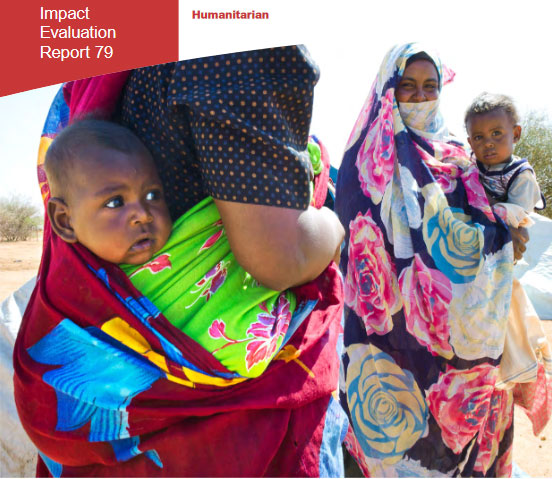 This impact evaluation assessed the effectiveness of the World Food Programme’s (WFP) ongoing food-based prevention of moderate acute malnutrition (MAM) program when added to the targeted supplementary feeding as a package intervention. The study investigated the impact of the intervention package on rates of MAM, severe acute malnourishment and global acute malnourishment among children and pregnant and lactating women. In addition, the study assessed the number of participants at risk of malnutrition. Here is the full report on our evidence hub.
This impact evaluation assessed the effectiveness of the World Food Programme’s (WFP) ongoing food-based prevention of moderate acute malnutrition (MAM) program when added to the targeted supplementary feeding as a package intervention. The study investigated the impact of the intervention package on rates of MAM, severe acute malnourishment and global acute malnourishment among children and pregnant and lactating women. In addition, the study assessed the number of participants at risk of malnutrition. Here is the full report on our evidence hub.
In terms of the evidence impact, the 3ie-supported evaluation was used to improve the content of trainings imparted to implementation staff and volunteers by WFP Sudan and Sudan’s Federal Ministry of Health (FMoH). Evaluation findings strengthened the case for WFP Sudan and FMoH to fund and expand the use of mass media to improve coverage of social and behaviour change communication component. WFP Sudan also recognized the need to improve program monitoring in order to improve its coverage, and made it a central feature of programming. Read this evidence impact summary to know more about the factors that contributed to the impact.
Safety net program
Productive Safety Net Program in Ethiopia: impacts on children’s schooling, labour and nutritional status
This study examines whether Ethiopia’s Productive Safety Net Programme (PNSP) has had additional impacts on children’s schooling, labour and nutrition. The PSNP contains a mix of public works employment and unconditional transfers. The study identified effects of participation in the public works program by coming outcomes of PSNP beneficiaries and non-beneficiaries. The impact of PSNP on children’s schooling and labour outcomes vary across years. Researchers found no evidence that the PSNP reduces chronic or acute undernutrition. Read the impact evaluation report on our evidence hub and a related brief on some of the findings.
Cotton farmers training
Impact evaluation of the Organic Cotton Farmers Training Program in India
CottonConnect (CC) is the strategy and implementation partner for the Laudes Foundation-supported Organic Cotton Farmers Training Program in India, covering 23,000 farmers across four Indian States - Maharashtra, Madhya Pradesh, Rajasthan, and Gujarat. The program aims at scaling up the production of organic cotton by capacitating farmers through the provision of:
- Training and capacity building in organic cotton cultivation
- Financial support for organic certification
- Improved access to key resources and market opportunities through the creation of farmer producer organizations (FPOs)
3ie has partnered with CottonConnect to quality-assure the impact evaluation of the Organic Cotton Farmers Training Program in India. The evaluation is led by Catalyst Management Services (CMS) in collaboration with Vrutti Livelihoods Resource Centre. Implemented in 2015, the six-year longitudinal study is evaluating the impacts of program in influencing the adoption of organic cotton cultivation and its viability in delivering economic, social and environmental benefits as compared to conventional practices of cotton cultivation. The baseline and midline studies have been completed. Currently, the program is at the endline stage.
Child stunting
Addressing knowledge gap on child stunting
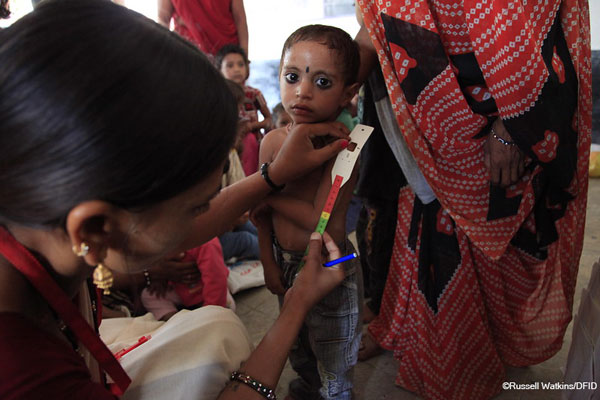 In 2012, the World Health Assembly recognized that child stunting was ‘one of the most significant impediments to human development’. WHO estimated that in 2020, globally, 149.2 million children under the age of five were stunted. However, little is known about the relationship between the known biological, social, environmental and behavioural drivers of stunting. With support from UK Research and Innovation (UKRI) through the Global Challenges Research Fund (GCRF), the London International Development Centre (LIDC) and the London School of Hygiene & Tropical Medicine (LSHTM) are leading an interdisciplinary research hub comprising 18 institutions to address this knowledge gap.
In 2012, the World Health Assembly recognized that child stunting was ‘one of the most significant impediments to human development’. WHO estimated that in 2020, globally, 149.2 million children under the age of five were stunted. However, little is known about the relationship between the known biological, social, environmental and behavioural drivers of stunting. With support from UK Research and Innovation (UKRI) through the Global Challenges Research Fund (GCRF), the London International Development Centre (LIDC) and the London School of Hygiene & Tropical Medicine (LSHTM) are leading an interdisciplinary research hub comprising 18 institutions to address this knowledge gap.
Running for a five-year period from March 2019 to March 2024, The Action Against Stunting Hub aims to understand the biological, social, environmental and behavioural context in which stunting occurs and implement contextually relevant strategies to reduce its prevalence. To understand what strategies work, where and at what cost to decrease stunting, 3ie has partnered with the Stunting Hub to design an impact evaluation of an intervention that aims to enhance cognitive and educational outcomes among children aged five years across three contexts: Senegal (Kaffrine), India (Hyderabad) and Indonesia (Lombok). In addition, 3ie will work with the hub to build their capacities in impact evaluation and evidence syntheses methodologies.
